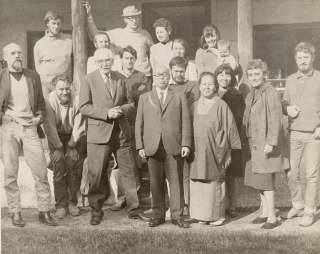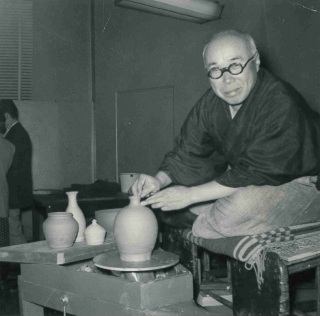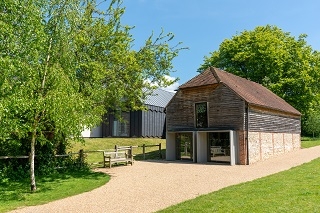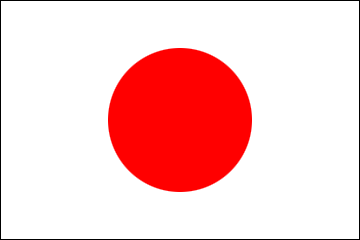HAMADA Shōji in the UK - 100 Years On
2020/6/18
 Bernard Leach, Hamada Shoji and the Leach Pottery staff, St Ives, c.1960
Image kindly provided by the Crafts Study Centre, University for the Creative Arts, BHL8998
Bernard Leach, Hamada Shoji and the Leach Pottery staff, St Ives, c.1960
Image kindly provided by the Crafts Study Centre, University for the Creative Arts, BHL8998
 Hamada Shoji demonstrating throwing, 1953
Image kindly provided by the Crafts Study Centre, University for the Creative Arts, BHL13300
Hamada Shoji demonstrating throwing, 1953
Image kindly provided by the Crafts Study Centre, University for the Creative Arts, BHL13300
 Ditchling Museum of Art + Craft
Ditchling Museum of Art + Craft
One hundred years have passed since the potter HAMADA Shōji first set foot in the UK and the time he spent here has proven to have a lasting influence on the artistic relations between the two countries.
Born in Kanagawa in 1894, Hamada studied ceramics at Tokyo Higher Technical School (now the Tokyo Institute of Technology) and went on to do extensive research on glazing techniques at the Kyoto Ceramic Testing Institute. Through his involvement with the emerging mingei movement that advocated folk craft, Hamada met Bernard Leach in Tokyo and they struck up a great friendship. The two travelled from Japan to the UK in 1920 and together they built a climbing kiln and workshop in St Ives, Cornwall and established the Leach Pottery.
Although the programme for Leach 100, a nationwide series of activities, exhibitions and artist residencies to celebrate the centenary, will have to be rescheduled as a result of the impact of Covid-19, the Leach Pottery has launched a new online initiative called Pottery and People. This campaign gives the opportunity for people around the globe to tell the story behind their favourite piece of pottery or ceramic art. Libby Buckley, Leach Pottery Director, said, “We are inviting people to consider why their favourite piece of pottery means so much to them. Pottery, and objects, can take on a different significance in different countries and cultures and we’re hoping to see a truly global reaction and involvement in our Pottery and People campaign.” The passion for pottery has continued down through the generations and among those to feature are the descendants of HAMADA Shōji and Bernard Leach. Detailed information can be found on their website.
During his time in the UK, Hamada was drawn towards the picturesque village of Ditchling in East Sussex. He was fascinated by the spirit amongst the community of artists living there which included sculptor Eric Gill, weaver Ethel Mairet and artist Frank Brangwyn he visited twice with Leach, and a third time with Yanagi Soetsu, founder of the mingei movement. Inspired by Ditchling, Hamada would go on to set up his workshop in Mashiko, Tochigi Prefecture following his return to Japan and helped to establish the town as a creative hub for pottery.
The links between Ditchling and Japan continue to this day. The Ditchling Museum of Art + Craft is rescheduling their exhibition which explores the nature of these links through the work of Hamada to begin in late 2021. Steph Fuller, the director of the museum, spoke of these connections and of her recent visit to Mashiko in this video. Currently, the museum is curating an online programme of activities, tutorials and talks under the title of #CreatetoRelate to inspire craftspeople of all ages. Visit the website for further details.
Hamada and Leach had a lifelong friendship and visited each other on a few occasions. Individually, they were fêted for their great contributions to pottery but together they created a legacy which lasts to this very day.
Born in Kanagawa in 1894, Hamada studied ceramics at Tokyo Higher Technical School (now the Tokyo Institute of Technology) and went on to do extensive research on glazing techniques at the Kyoto Ceramic Testing Institute. Through his involvement with the emerging mingei movement that advocated folk craft, Hamada met Bernard Leach in Tokyo and they struck up a great friendship. The two travelled from Japan to the UK in 1920 and together they built a climbing kiln and workshop in St Ives, Cornwall and established the Leach Pottery.
Although the programme for Leach 100, a nationwide series of activities, exhibitions and artist residencies to celebrate the centenary, will have to be rescheduled as a result of the impact of Covid-19, the Leach Pottery has launched a new online initiative called Pottery and People. This campaign gives the opportunity for people around the globe to tell the story behind their favourite piece of pottery or ceramic art. Libby Buckley, Leach Pottery Director, said, “We are inviting people to consider why their favourite piece of pottery means so much to them. Pottery, and objects, can take on a different significance in different countries and cultures and we’re hoping to see a truly global reaction and involvement in our Pottery and People campaign.” The passion for pottery has continued down through the generations and among those to feature are the descendants of HAMADA Shōji and Bernard Leach. Detailed information can be found on their website.
During his time in the UK, Hamada was drawn towards the picturesque village of Ditchling in East Sussex. He was fascinated by the spirit amongst the community of artists living there which included sculptor Eric Gill, weaver Ethel Mairet and artist Frank Brangwyn he visited twice with Leach, and a third time with Yanagi Soetsu, founder of the mingei movement. Inspired by Ditchling, Hamada would go on to set up his workshop in Mashiko, Tochigi Prefecture following his return to Japan and helped to establish the town as a creative hub for pottery.
The links between Ditchling and Japan continue to this day. The Ditchling Museum of Art + Craft is rescheduling their exhibition which explores the nature of these links through the work of Hamada to begin in late 2021. Steph Fuller, the director of the museum, spoke of these connections and of her recent visit to Mashiko in this video. Currently, the museum is curating an online programme of activities, tutorials and talks under the title of #CreatetoRelate to inspire craftspeople of all ages. Visit the website for further details.
Hamada and Leach had a lifelong friendship and visited each other on a few occasions. Individually, they were fêted for their great contributions to pottery but together they created a legacy which lasts to this very day.

